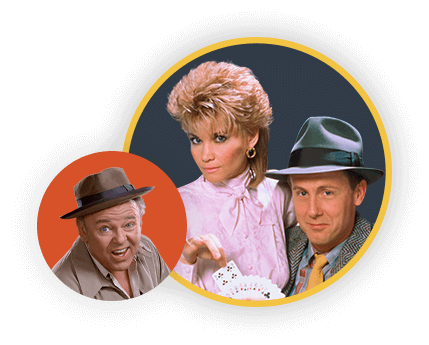6 scary reasons Halloween was way more dangerous for '70s kids

Today, trick or treaters grow rarer and rarer to come by each year, as parents opt to keep their kids safe by attending alternative events hosted in malls, schools, churches and other community centers where their kids can never wander.
Anyone who grew up in the 1970s would have themselves a good laugh at what's become known as helicopter parenting, which has begun to bleed over into Halloween. That's because back in the 1970s, there were serious dangers that kids dodged while ducking from house to house with their pillowcases full of candy dragging behind them. To prove it, we went back through old newspapers and magazines to see what kind of scares kids back in the day confronted on this costumed holiday.
From highly flammable costumes to the origin of that urban legend about razor blades in apples, we found a lot of frankly terrifying headlines in the 1970s that have us shaking in fear at how kids back then managed to survive to tell their tales of Halloween today.
Did you grow up in the 1970s? Let us know if your mom ever warned you about any of the spooky '70s stuff we found below.

Many Halloween costumes were considered highly flammable.
In 1971, the F.D.A. issued a warning to parents to check their kids' costumes to ensure they weren't made out of flammable material. Our guess? Some kids were standing too close to the jack-o-lanterns on the stoops. It was so problematic, they actually updated their standards the next July to stop costume manufacturers from producing costumes that could easily set fire.
Their recommendation in the New York Times for parents in the meantime who were unsure if their kids' costumes were okay, well let's just say it makes the whole thing sound pretty serious:
"Many homemade costumes can be treated against bursting into flames by dipping or spraying them with a Solution of seven ounces of borax and three ounces of boric acid in two quarts of hot water, The treatment must be repeated after each washing."
Image: flashbak.com

Whatever you do, don't eat the red M&Ms.
In 1976, they straight-up stopped making red M&Ms. Why? Because it turns out they were poisonous. In the 1950s, Red Dye No. 2 in candy made so many kids sick that it set off a scare, but they wound up shushing the worried moms and dads, saying it wasn't the Red Dye to blame for their illnesses after all.
Turns out, they were wrong. (That's why you always listen to mom and dad, kids.) By 1970, Priceonomics.com reports that Red Dye No. 2 was an ingredient in $10 billion of food products manufactured that year. After several studies insisted Red Dye No. 2 was poisonous, the FDA banned its use, and red M&Ms vanished even though they didn't even use that particular dye.
It seems the agreement at Mars was that it was best to avoid confusion. This meant kids who got M&Ms trick-or-treating didn't have to suffer their moms picking through the bag to toss out perfectly good M&Ms!
Image: Mars Company/Pinterest

There were real witches in Long Island.
In 1971, the Buckland Museum of Witchcraft and Magick opened in Long Island, New York, and according to the New York Times, it was real witches cutting the ribbon on its grand opening. Dr. Raymond Buckland and his wife Rosemary went public as witches after escaping to New York from England in 1962. Their coven included other witches with names like Skylled, Maverick, and Flan, and Rosemary said her witch name was Rowan. You don't have to be scared if this witchcraft went on right under your nose, though - they insist it was more about farming crops than cursing villages.
Image: neatocoolville.blogspot.com

Kids were carving pumpkins with real knives.
A 1968 issue of Boys Life we dug up provides instructions for young boys carving pumpkins alone for the first time. It recommends tools today's kids would never touch, like an old nail and a sharp carving knife. To teach the boys how to angle the knife, they simply use a back-slash as an example - which means boys were basically just winging it as they approached the hard exterior of their fattened gourds to pierce its skin responsibly. We all know kids in the 1970s grappled with the same challenges, whereas kids today get plastic, saw-toothed tools, custom-designed for their carving needs.
Image: Crest/Pinterest

Look out for razor blades in apples.
In 1971, the New York Times reported a story that has now become one of Halloween's most-repeated legends. It told of a man in Queens who was arrested and charged for endangering the 8-year-old girl who received an apple from him that contained razors blades while she was trick or treating. While the man confirmed he had been giving out apples, he denied he put the razor blades there.
But that man wasn't the only one the New York Times discovered. Two days prior, they reported that a young boy's parents found both razor blades and pins in an apple he'd tossed in his Halloween bag. They went to the police, and that led police to drive around in patrol cars shouting warnings through a loud speaker. From there, word-of-mouth turned these two curious instances into Halloween's biggest caution.
Image: Estee Lauder/quora.com

Check your candy bars, too.
The same exact year of the apple scandals in Long Island, there was more trouble discovered by police. This time it was crushed pills found in three different kids' candy bars, the New York Times reported in 1971. The story says their candies had been rewrapped, just as moms today still warn their kids to check for. Thankfully, all three kids had heard their moms loud and clear and waited to enjoy any candy until it had been inspected.
Image: Curtiss Candy Company




